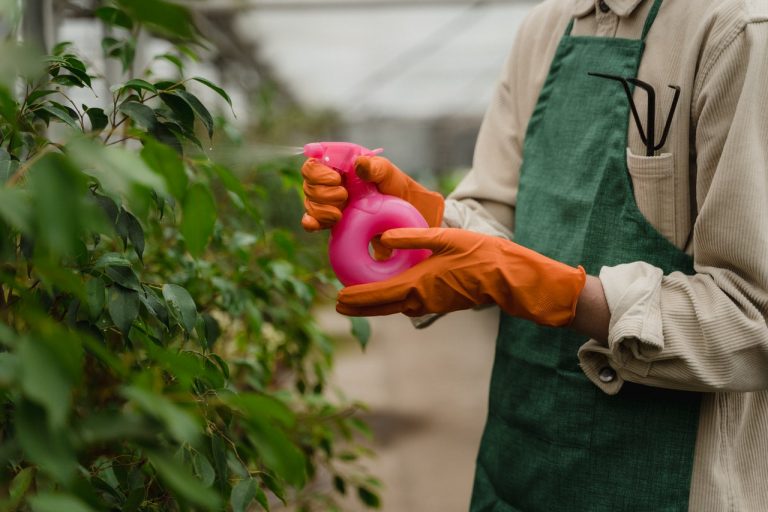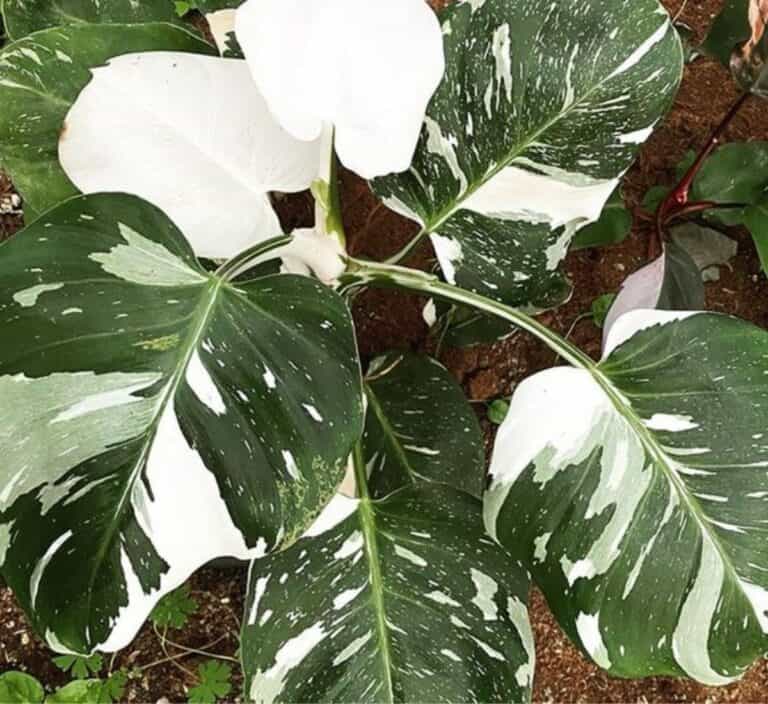Best Soil for Indoor Plants: The Ultimate Guide to Choosing the Perfect Soil for Your Houseplants
Growing houseplants is amazing! Being the master of your own indoor garden? Cultivating your dream flora?
Creating an oxygen-rich, aesthetically pleasing environment in your own living room?
Gimme a shovel, I’m all in!
I know just how vital it is to pick the right stuff to fill up those pots.
And by stuff, I mean soil the rich, earthy goodness that your green babies sink their roots into.
This guide will dish out the dirt on the absolute Best Soil for Indoor Plants, whether you’re a seasoned green thumb or a newbie plant parent.
Soil, is where they get their food, their water, and even their air.
And just like us, different plants crave different things from their homes.
Some like it light and airy, and some like it rich and heavy.
From all-purpose potting mixes to the more specific concoctions whipped up for your cacti, succulents, and orchids, we’ll go deep into the ground (pun totally intended) to understand the who, what, and why of soil types for your plants.
With what feels like a billion choices on the market, it’s easy to get a bit…soil shocked.
So If you’re feeling a tad lost in the potting mix department, let me help you dig out of it.
I’ve got the scoop on the Best Soil for Indoor Plants to keep your plants not just alive, but thriving.

Best Soil for Indoor Plants
As someone who loves indoor plants, I can’t overstate the importance of choosing the right soil. Let us cover the various aspects of indoor plant soil, including potting soil mix, organic vs synthetic, as well as water retention and drainage.
Potting Soil Mix: The Ultimate Indoor Plant Power Food
Choosing the right potting soil mix is a bit like creating a gourmet meal for your plants.
You need a dash of this, a pinch of that.
Your go-to ingredients are
- Peat moss for that sponge-like moisture-hoarding,
- Perlite for some good ol’ aeration and drainage,
- Vermiculite to keep the H2O where it should be, and
- some wholesome compost for a nutrient buffet.
Want some recommendations from one plant parent to another? Check out Sun Gro Horticulture Black Gold or Miracle-Gro Indoor Potting Mix; seriously, they’re like the comfort food of the indoor plant world.
Organic vs Synthetic
Let’s talk about the big question; the face-off between organic and synthetic.
Organic soil is like a home-cooked meal, full of natural goodies like peat, bark, compost, and worm castings, creating a buzzing metropolis for your plant roots and their microbial buddies.
On the other hand, synthetic soil is the fast food of the plant world.
It’s loaded with quick-release chemical fertilizers and artificially created nutrients.
Given the choice, I’ll always go for the slow-and-steady, organic route.
For me, it’s Espoma Organic Potting Mix all the way.
It’s like a slow cooker for my indoor greenery, supporting a balanced, sustainable feeding process.
Water Retention and Drainage: A Balancing Act
Getting the water retention and drainage balance right is all about alignment.
A good potting mix should have aeration for the roots to breathe, yet retain just the right amount of water to keep root rot at bay.
Peat moss and vermiculite play a critical role here, acting as natural water sponges in the soil mix.
Meanwhile, perlite is keeps the soil loose and well-drained.
If you’re potting water-shy plants like succulents, think about adding some extra perlite or sand. They love a fast-draining environment.
By focusing on these key elements, my indoor garden has flourished.
And hey, what can be more rewarding than seeing your plant family thrive, right?

Understanding Soil Components
Once you start understanding how Coconut Coir, Worm Castings, Sphagnum Moss, Pumice, and Sand function, it’s like having a cheat code for creating the ultimate potting mix.
Coconut Coir
Think of Coconut Coir as the ‘do-it-all’ miracle worker of the plant world.
This versatile component is like peat moss’s eco-friendly cousin, born from coconut husks.
It offers the perfect combo of moisture retention and aeration, ensuring your plants hit that sweet spot of hydration and oxygen.
Worm Castings
When it comes to plant nutrition, Worm Castings are the unsung heroes.
These tiny power nuggets are packed with nutrients, courtesy of our worm friends.
Add them into your potting mix, and you’ll watch your plants flourish.
Sphagnum Moss
Meet Sphagnum Moss, the hydration champion of indoor plant soil.
It’s super absorbent and creates an airy soil environment, ensuring your plant babies get the right balance of water and oxygen.
Pumice
Then there’s Pumice, a lightweight volcanic rock star of the soil world.
It’s great for preventing soil compaction, helping plant roots breathe easily.
Plus, it creates a cozy home for beneficial microorganisms and tiny allies in your plant’s growth journey.
Sand
Last but not least, Sand is a great addition for those plants that crave great drainage.
Its coarse texture keeps the soil airy, ensuring your plants don’t have to deal with the dread of waterlogging and root rot.
Thriving indoor plants is all about understanding these soil components.
By knowing what Coconut Coir, Worm Castings, Sphagnum Moss, Pumice, and Sand bring to the pot, I can mix up the perfect soil blend for my plants.
And let me tell you; there’s nothing more satisfying than watching them flourish in the perfect home you’ve created.

Indoor Plant Soil Guide
Being a houseplant parent, I’ve figured out that picking the perfect soil is like playing matchmaker for your indoor greens.
Trust me; it’s all about setting the right mood with optimal pH levels, throwing a feast with the right nutrients and fertilizers, and ensuring the is roomy enough for roots to grow.
Adjusting pH Levels: The Mood Setters
Just like us, different plants prefer different vibes, or in this case, pH levels.
The key to a thriving indoor garden is Regular soil pH testing and adjustments.
Most houseplants love hanging out in a slightly acidic to neutral zone, with a pH ranging from 6.0 to 7.0, but remember, those unique ones always like to stand out from the crowd.
If you want to crank up the acidity, peat moss or sulfur compounds are your go-to , lowering the pH and creating the perfect acid mix.
And if you’re dealing with plants that like things a little more alkaline, sprinkle in some lime to raise the pH and keep them grooving.
Optimizing Nutrients and Fertilizers: The Feast Providers
Let’s talk about the banquet of nutrients.
This is where the fertilizers step in.
Your plants need a balanced diet of nitrogen, phosphorus, and potassium, popularly known as the NPK ratio.
A well-rounded store-bought potting mix often does the trick for a wide variety of indoor plants.
But then, you’ve got those finicky eaters the cacti, succulents, and other specialty plants.
They might need a bit of a customized meal.
This is when I become a plant nutritionist, checking labels and ensuring they’re getting the specific nutrients they crave.
Airflow and Aeration: The Dance Floor Organizers
Imagine being at a crowded party where you can’t move bummer, right?
The same goes for your plant’s roots.
They need space to dance, breathe, and grow.
That’s where the soil mix with good airflow and aeration comes in.
I like to think of ingredients like perlite, vermiculite, or coarse sand as the bouncers of this plant party they maintain the crowd, ensuring the soil is loose and breathable.
It’s all about giving those roots the room they need to boogie while keeping waterlogging and root rot at bay.

Conclusion
So, there you have it
My recipe for creating the perfect soil for my plants.
By managing pH levels, laying out a nutrient-rich spread, and ensuring there’s ample room for the roots to cut loose.
Have you struck gold with a soil mix that made your plant better?
Or perhaps you’ve battled the beasts of pH imbalance and nutrient deficiency?
Share in the comments below.
For more tips and tricks on nurturing your leafy companions, dive into this fantastic post on indoor plant care.
Still, finding your rhythm with the right soil? Grab this: my free guide to indoor plant soils.
Happy potting.







